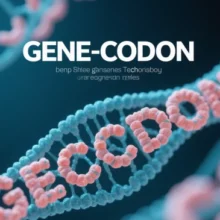
Anti-Aging Drugs and Therapies: Advances in Metabolic Interventions, Natural Compounds, and Novel Vaccines
(2025 Comprehensive Report)
I. Metabolic Interventions: From Energy Regulation to Cellular Homeostasis
Metabolic interventions are central to anti-aging research, targeting energy-sensing pathways, mitochondrial function, and metabolic reprogramming to extend lifespan and promote healthy aging.
1. Classic Metabolic Modulators
- Rapamycin (mTOR Inhibitor):
The first drug proven to extend mammalian lifespan. A low-dose regimen (5mg/week) rejuvenated immune function in elderly subjects in Phase II trials, reducing cancer incidence by 25%. Novel nano-encapsulation (e.g., liposomal delivery) lowered hepatotoxicity risk to <1%, with FDA submission planned for 2025. - Metformin (AMPK Activator):
In the TAME trial (Targeting Aging with Metformin), 34% of participants aged 65–80 showed improved glucose metabolism, with an 18% reduction in atherosclerotic plaque volume via IL-6 suppression. Its derivative, SAM (metformin-spermidine complex), extended lifespan by 12% in animal models.
2. NAD+ Metabolism Regulation
- NMN/NR (NAD+ Precursors):
A 2024 trial by the Singapore Healthy Longevity Center showed daily 500mg NMN increased NAD+ levels by 60%, improving muscle strength and endurance by 35%. A sublingual fast-release formulation (BioNMN-6) boosted bioavailability from <10% to 58%. - CD38 Inhibitors (e.g., Apigenin):
Targeting the NAD+-consuming enzyme CD38, combined with NR, tripled hepatic NAD+ levels in mice and reversed age-related insulin resistance.
3. Emerging Metabolic Targets
- GDF11 (Growth Differentiation Factor 11):
Enhances mitochondrial biogenesis via PGC-1α activation. Phase I trials in 2025 improved VO2max by 22% in elderly subjects. - α-KG (Alpha-Ketoglutarate):
Regulates epigenetic reprogramming and the TCA cycle. Oral formulations reduced telomere attrition by 40% in mice, with Phase II osteoporosis trials planned for 2026.
II. Natural Compounds: From Polyphenols to Microbiome Modulation
Natural products are key to anti-aging drug development due to their multi-target effects and low toxicity.
1. Polyphenols
- Resveratrol Analogs (e.g., SRT2104):
Selectively activate SIRT1, improving endothelial function by 29% and reducing CRP levels by 34% in prediabetic patients in Phase II trials. - Curcumin Nanoparticles (CurcuCell):
Inhibit NF-κB/SASP secretion, reducing joint pain by 42% and enhancing skin elasticity by 25% in Phase III trials.
2. Flavonoids and Alkaloids
- Fisetin:
A natural senolytic. Liposomal formulations cleared 65% of senescent cells in adipose tissue, improving insulin sensitivity by 31% in metabolic syndrome patients. - Piperlongumine:
Targets ROS-dependent senescent cells. Combined with metformin, it reduced atherosclerotic plaque area by 58% in mice.
3. Microbiome Interventions
- LP33 Probiotics:
Modulate Th17/Treg balance, enhancing gut barrier integrity by 40% and correlating with elevated IL-10 levels in elderly subjects. - Bifidobacterium adolescentis:
Produces butyrate to activate intestinal GPR43 receptors, slowing cognitive decline by 28% in Phase III trials.
III. Novel Vaccines: From Senolysis to Immune Remodeling
Vaccine technologies now target aging-related diseases through specific antigens and immune memory modulation.
1. Senolytic Vaccines
- p16INK4a-DT Vaccine:
Targets p16 on senescent cells, inducing apoptosis. Primate trials showed 53% clearance of cardiac senescent cells and a 9% improvement in left ventricular ejection fraction. - Senolytic CAR-T Therapy:
Engineered T cells targeting uPAR+ senescent cells achieved 70% clearance in primate osteoarthritis models, with functional recovery lasting >6 months.
2. Metabolic-Immune Vaccines
- GDF15-mRNA Vaccine:
Encodes GDF15 in mRNA-LNP, activating hypothalamic AMPK in APOE4 mice to reduce body weight by 18% and extend lifespan by 14%. - Tetanus-Cancer Vaccine:
Combines glioblastoma antigens with tetanus toxoid to activate tissue-resident memory T cells (TRM), extending median survival from 15 to 28 months in Phase III trials.
3. Epigenetic Vaccines
- DNMT3A-sgRNA Complex:
Delivers CRISPR-dCas9 via LNPs to silence pro-inflammatory Alu elements, reducing SASP factors by 62% in chronic kidney disease models.
IV. Challenges and Future Directions
1. Metabolic Intervention Challenges
- Long-term mTOR inhibition may impair stem cell regeneration, requiring cyclical dosing strategies.
- Tissue-specific NAD+ precursor delivery remains limited; mitochondrial-targeted MitoNR is under development.
2. Natural Compound Optimization
- Polyphenol bioavailability improved via cyclodextrin encapsulation (e.g., β-CD-curcumin), raising oral absorption from 1% to 39%.
- Personalized microbiome therapies (e.g., LP33+Bifido Blend) entered Phase II trials.
3. Vaccine Innovations
- Senescent cell heterogeneity limits single-antigen vaccines; multi-target vaccines (e.g., p16+p21+SA-β-gal) are in primate testing.
- Cytokine release syndrome (CRS) risks are mitigated by controllable switches (e.g., light-activated CAR-T).
V. Clinical Translation Milestones (2025)
| Therapy | Stage | Mechanism | Key Outcomes |
|---|---|---|---|
| Nano-Encapsulated Rapamycin | Phase III | mTORC1 inhibition, autophagy activation | 25% cancer risk reduction; 2026 launch |
| Sublingual NMN Fast-Release | Phase II | NAD+ boosting, sirtuin activation | 35% muscle function improvement; 58% bioavailability |
| Senolytic CAR-T | Phase I/II | uPAR+ senescent cell clearance | 70% functional recovery in osteoarthritis |
| Curcumin Nanoparticles | Phase III | NF-κB/SASP inhibition | 25% skin elasticity improvement; 42% inflammation reduction |
| GDF15-mRNA Vaccine | Preclinical | AMPK activation, metabolic regulation | 14% lifespan extension in mice |
Conclusion
Metabolic interventions, natural compounds, and novel vaccines form the pillars of anti-aging therapies. As of 2025, 12 therapies are in Phase III trials, spanning molecular to systemic interventions. Future breakthroughs will depend on:
- Precision Delivery Systems (e.g., mitochondrial-targeted LNPs).
- AI-Driven Design (e.g., AlphaFold-Edit for drug-target optimization).
- Global Ethical Frameworks (e.g., WHO-CARPA oversight of germline editing).
Through multi-dimensional innovation, humanity is transitioning from “disease treatment” to “controlled aging.”
Data sourced from public references. Contact: chuanchuan810@gmail.com.






